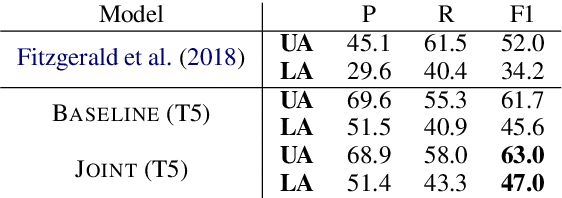QASem Parsing: Text-to-text Modeling of QA-based Semantics
Paper and Code
May 23, 2022



Several recent works have suggested to represent semantic relations with questions and answers, decomposing textual information into separate interrogative natural language statements. In this paper, we consider three QA-based semantic tasks - namely, QA-SRL, QANom and QADiscourse, each targeting a certain type of predication - and propose to regard them as jointly providing a comprehensive representation of textual information. To promote this goal, we investigate how to best utilize the power of sequence-to-sequence (seq2seq) pre-trained language models, within the unique setup of semi-structured outputs, consisting of an unordered set of question-answer pairs. We examine different input and output linearization strategies, and assess the effect of multitask learning and of simple data augmentation techniques in the setting of imbalanced training data. Consequently, we release the first unified QASem parsing tool, practical for downstream applications who can benefit from an explicit, QA-based account of information units in a text.
 Add to Chrome
Add to Chrome Add to Firefox
Add to Firefox Add to Edge
Add to Edge